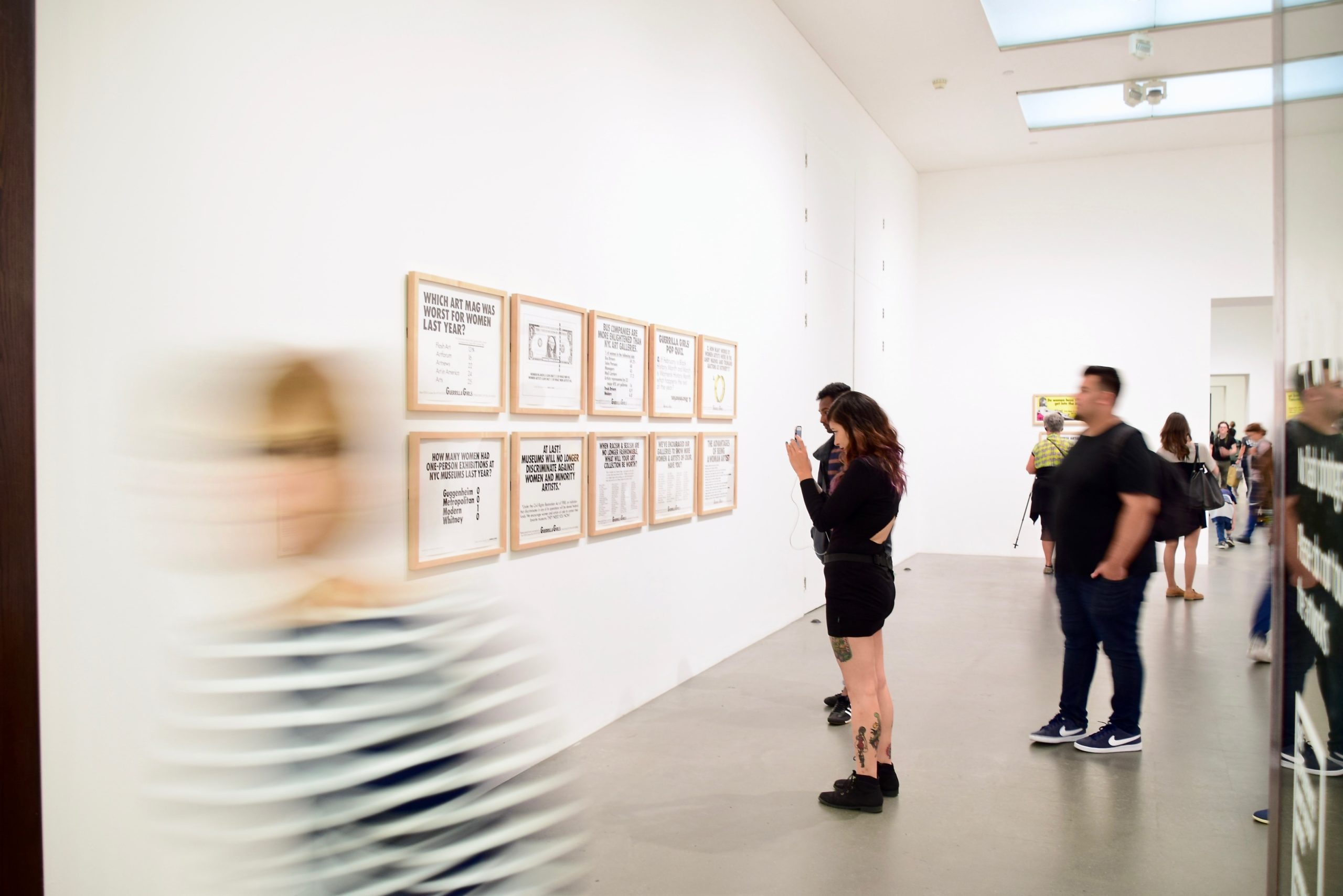Managing museum visitor flows in a socially-distant world
As cities around the world slowly begin to reopen and summer approaches, museums and cultural sites everywhere will need to consider how to keep their visitors safe when they decide to reopen their physical spaces. While previous blogs have discussed the best ways to calculate the number of people able to enter spaces like shops, museums will need to follow specific visitor management practices to respect social distancing rules in areas prone to bottlenecks such as ticketing areas, security checks, and even elevators. Outlined below are some practices that museums and other cultural sites should consider before opening their doors.
Ticketing practices
The number of visitors entering museums or other cultural site should reflect the site’s carrying capacity calculated with social distancing parameters as described in the previous post. As queues in general are to be avoided as much as possible, the best way for visitors to buy tickets will be through online ticketing. In-person purchase of tickets should be limited to customers who cannot access online ticketing. If on-site ticketing booths are allowed, hygiene rules advised by medical experts such as glass shields, cleaning of touch screens and keypads, providing gloves and self-service credit card readers should be considered. Kiosks are a great alternative to in-person ticketing operations. If the kiosks are used, crowding around them can be avoided with marked waiting spots and ensuring adequate spacing between each kiosk.
But how many kiosks should museums have? As kiosk purchasing time can change from one person to the next, the number of visitors served within a 5-minute period varies considerably between kiosks. In the table below, we have calculated the number of the number of visitors that can be served within 5 minutes depending on how many kiosks there using a simulation model. According to our own observations in major cultural sites, each visitor spends 65 seconds on average at a kiosk.
Table 1: Number of kiosks correlated to number of customers served
Another key aspect of online ticketing will be assigning visitors arrival times (also known as timed ticketing), with a certain number of group tickets assigned a specific arrival time. To further decrease arrival congestion, arrival times should be staggered every 100 tickets or so. Even intervals of at least 15 minutes would greatly minimize the number of persons arriving at once. Tickets should also be sold by groups rather than as individual tickets, with each group is allocated a group ID. Members of the same group would be allowed to stay closer than 6 feet, thus allowing for easier management of social distancing in museum spaces. Groups would only be made up of individuals who live in the same household. The IDs themselves should be unique, easily-identifiable, and easily seen by staff. In the case of online ticketing, visitors could print these identifiers and attach them before leaving their homes; for visitors without access to a home printer, printing kiosks or mobile tickets featuring the ID.
Though this concept will be further developed in a later post, what is important to remember is that organizing visitors by groups will be key to ensuring that museums can run smoothly while enforcing social distancing measures by increasing museums’ ability to handle greater numbers of people without endangering visitors. As will become more clear below, group IDs are vital to organizing visitor flow through arrival, security, and exhibit portions of the museum.
Arrival and security checks
In general, early arrival queuing should be discouraged as much as possible. If queuing is unavoidable, marking waiting spots for each group is an option, as long as it doesn’t encourage people to arrive much earlier than their ticketing time. In general, bunched-up queues at entrance spaces must be dispersed by on-site staff, who should ensure that each group is kept 6 feet away from each other. Furthermore, visitors’ entrance into the site and through security check must be staggered to ensure further distancing of visitors within the site. If possible, a third of total arriving visitors should be allowed to enter every 5 minutes (For example, if 15 groups are scheduled for the same arrival time, 5 groups at time would enter the museum at least 5 minutes apart).
For security checks, utilization of group IDs will matter greatly as it can increase capacity by allowing for relaxed social distancing within each group as they go through security.
Exhibits
To ensure that social distancing happens throughout the museum, groups will need to stay together during their visit of the museum. This will be especially key for popular exhibits, as groups will allow for greater numbers of people to see the exhibit without breaking social distancing rules, as seen in the animation below.
Staffing
If museum staffing is significantly reduced to ensure safe work spaces, museums could choose to open only certain parts of museums or alternate which parts of the museum are open on each day. In general, staff should be trained to enforce social distancing between groups, hence, the importance of visible labels. For the must-see or popular exhibits, viewing spaces could be marked, but correct distancing would need to be enforced by staff.
While these are certainly not an exhaustive list of everything museums and other cultural spaces will have to consider when reopening, it highlights some of the key challenges that museums will face when reopening their doors. In general, strict care and attention should be placed on those areas where visitor interaction is highest (such as ticketing and security). By thinking ahead and preparing in advance everything needed to carry out the above measures, museums can ensure visitors a safe visit.
Stay up to date KCG’s blogs here and for a more generalized plan on how to deal with crowding at businesses, check out our previous blog.


